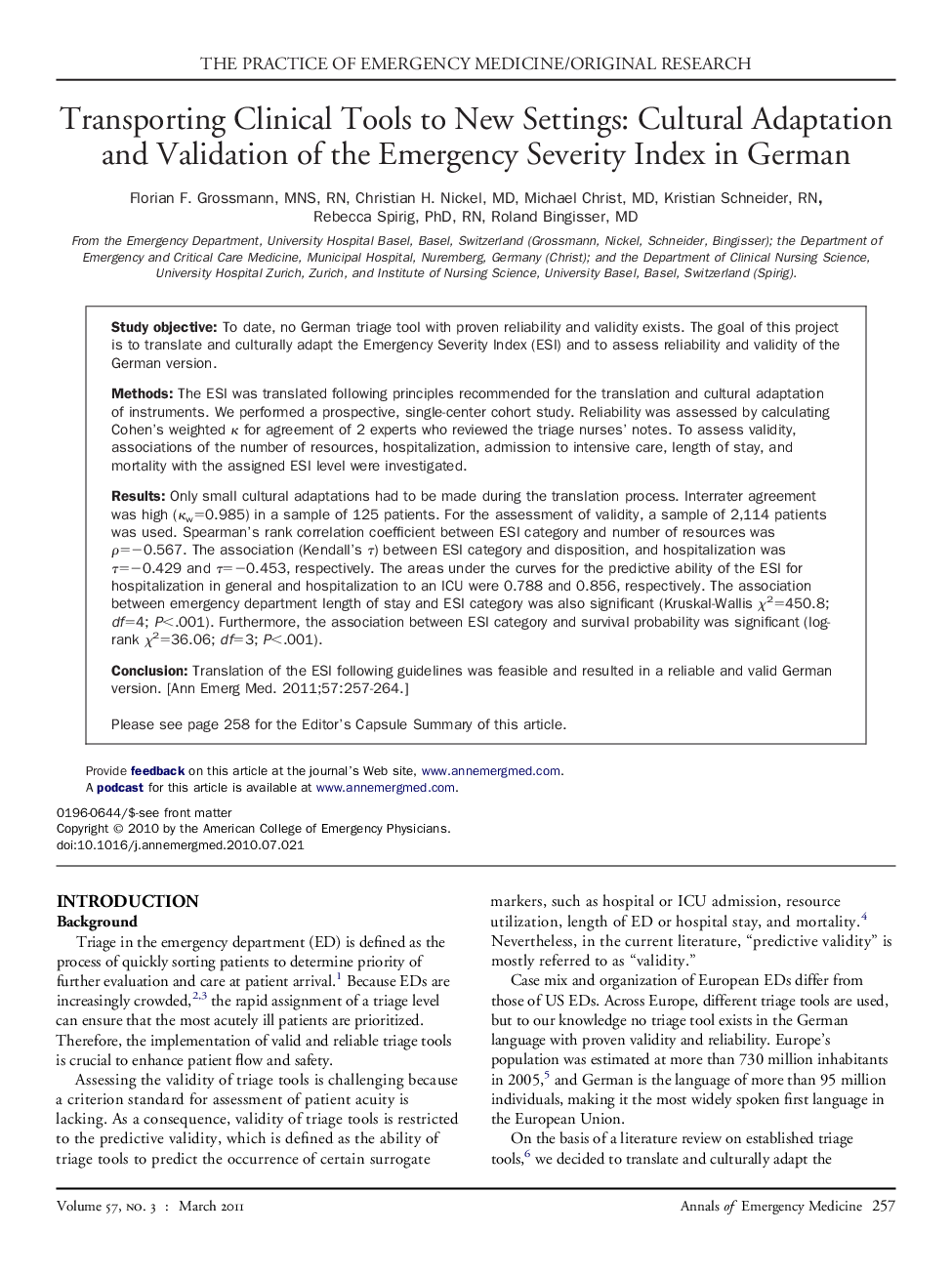| Article ID | Journal | Published Year | Pages | File Type |
|---|---|---|---|---|
| 3231328 | Annals of Emergency Medicine | 2011 | 8 Pages |
Study objectiveTo date, no German triage tool with proven reliability and validity exists. The goal of this project is to translate and culturally adapt the Emergency Severity Index (ESI) and to assess reliability and validity of the German version.MethodsThe ESI was translated following principles recommended for the translation and cultural adaptation of instruments. We performed a prospective, single-center cohort study. Reliability was assessed by calculating Cohen's weighted κ for agreement of 2 experts who reviewed the triage nurses' notes. To assess validity, associations of the number of resources, hospitalization, admission to intensive care, length of stay, and mortality with the assigned ESI level were investigated.ResultsOnly small cultural adaptations had to be made during the translation process. Interrater agreement was high (κw=0.985) in a sample of 125 patients. For the assessment of validity, a sample of 2,114 patients was used. Spearman's rank correlation coefficient between ESI category and number of resources was ρ=−0.567. The association (Kendall's τ) between ESI category and disposition, and hospitalization was τ=−0.429 and τ=−0.453, respectively. The areas under the curves for the predictive ability of the ESI for hospitalization in general and hospitalization to an ICU were 0.788 and 0.856, respectively. The association between emergency department length of stay and ESI category was also significant (Kruskal-Wallis χ2=450.8; df=4; P<.001). Furthermore, the association between ESI category and survival probability was significant (log-rank χ2=36.06; df=3; P<.001).ConclusionTranslation of the ESI following guidelines was feasible and resulted in a reliable and valid German version.
